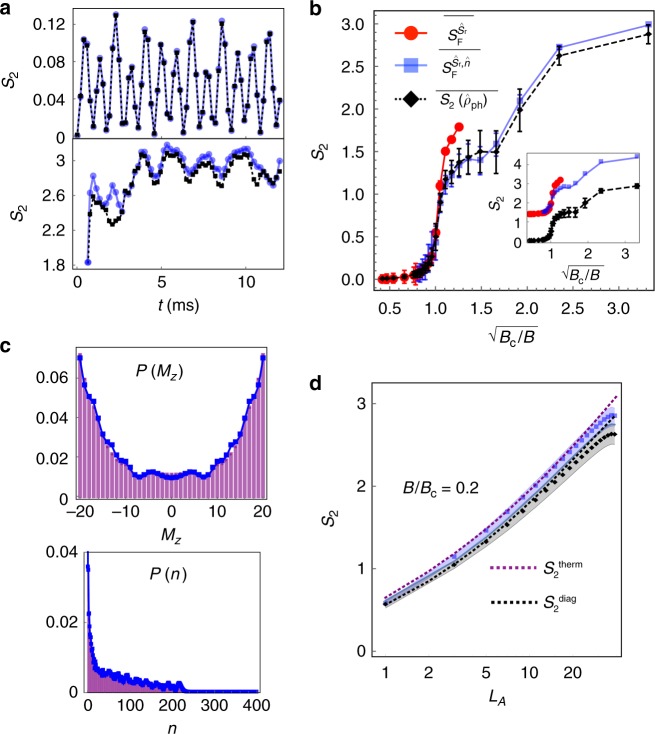Fig. 4.
Using RE and FOTOCs to characterize chaos and thermalization in the Dicke model. a Time evolution of the spin−phonon RE (black lines) for the initial state with B > Bc (top) and B < Bc (bottom). The RE is tracked excellently by the FOTOC expressions (blue lines) and respectively. Here, is chosen to minimize the coherence and diagonal terms in Eq. (4) (Supplementary Methods). b Long-time spin−phonon RE as a function of transverse field. To remove finite-size effects and residual oscillations we plot a time-averaged value for 4 ms ≤ t ≤ 12 ms (FOTOC quantities are averaged identically). The regular and chaotic dynamics for the initial state are clearly delineated: for B > Bc and for B < Bc respectively. Error bars indicate standard deviation of temporal fluctuations. In the inset we plot the same FOTOC quantities but including decoherence due to single-particle dephasing at the rate Γ = 60 s−1. The coherent parameters g, B and δ are enhanced by a factor of 16 compared to the main panel, as per ref. 60. c Time-averaged distribution functions (markers) for spin-projection P(Mz) and phonon occupation P(n) (6 ms ≤ t ≤ 12 ms). We compare to the distribution of the diagonal ensemble (purple bars, see Methods). d Bipartite RE (black markers) as a function of partition size LA of the spins, averaged over same time window as (c). For comparison, we plot the RE of a thermal canonical ensemble with corresponding temperature T fixed by the energy of the initial state , and the RE of the diagonal ensemble (see Methods). Volume-law behavior of the RE is replicated by the FOTOC quantity (blue markers). Note that the dimension of the spin Hilbert space scales linearly with LA. Shaded regions indicate standard deviation of temporal fluctuations. Data for (a)–(d) is obtained for N = 40, with g and δ identical to calculations of Fig. 2. For (c) and (d) we choose B/(2π) = 0.7 kHz (B/Bc = 0.2). Source data are provided as a Source Data file

